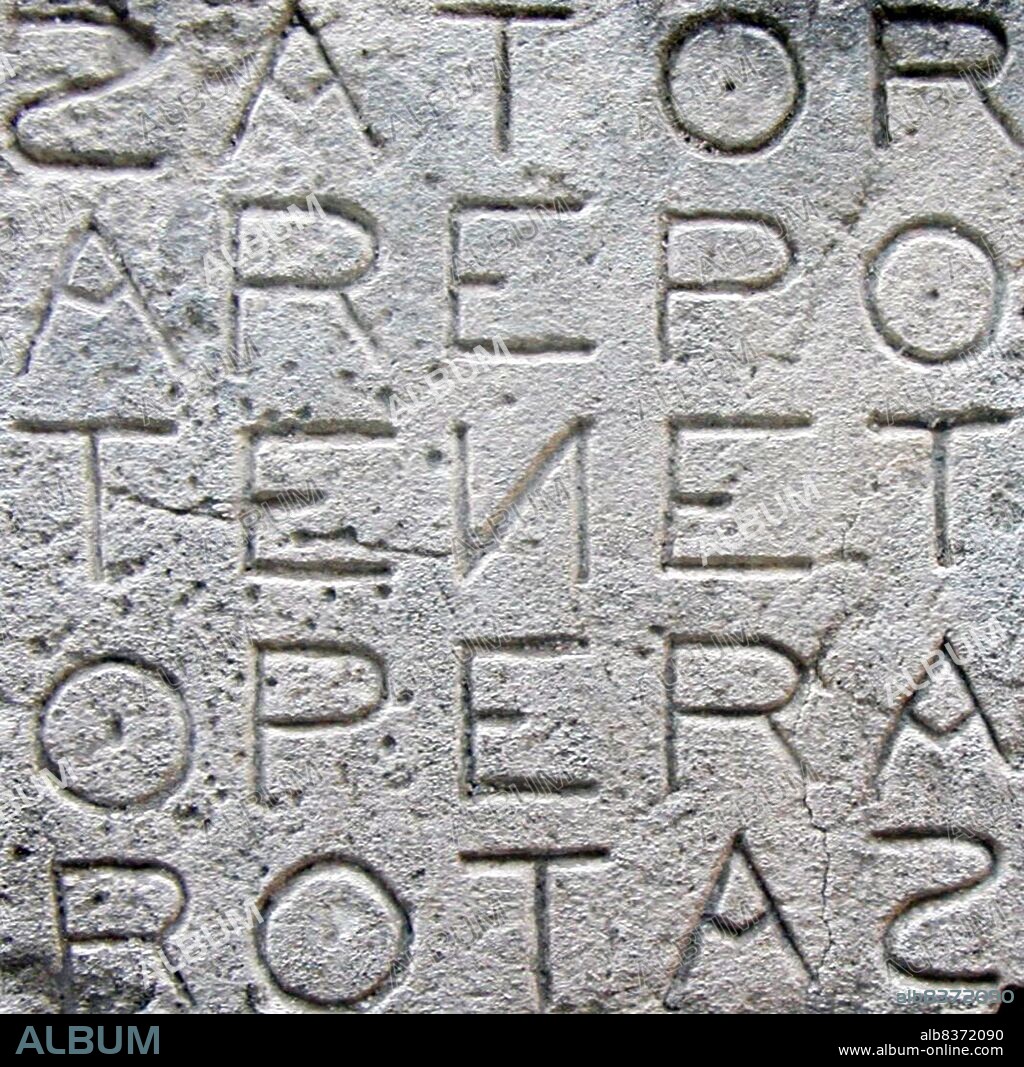alb8372090
France: A 'Rotas Square' or 'Sator Square', Oppede, Vaucluse, c. 2nd-4th century CE. Photo by M. Disdero (CC BY-SA 3.0)

|
Ajouter à une autre Lightbox |
|
Ajouter à une autre Lightbox |



Avez-vous déjà un compte? S'identifier
Vous n'avez pas de compte ? S'inscrire
Acheter cette image.
Sélectionnez l'usage:

Titre:
France: A 'Rotas Square' or 'Sator Square', Oppede, Vaucluse, c. 2nd-4th century CE. Photo by M. Disdero (CC BY-SA 3.0)
Légende:
Voir la traduction automatique
The Rotas Square (or Sator Square) is a word square containing a Latin palindrome. By repositioning the letters around the central letter , a Greek cross can be made that reads Pater Noster (Latin for 'Our Father', the first two words of the Lord's Prayer) both vertically and horizontally. The remaining letters two each of A and O can be taken to represent the concept of Alpha and Omega, a reference in Christianity to the omnipresence of God.
. The square was likely used as a covert symbol for early Christians to express their presence to each other.
. The square was likely used as a covert symbol for early Christians to express their presence to each other.
Crédit:
Album / Universal Images Group / Pictures From History
Autorisations:
Modèle: Non - Propriété: Non
Questions sur les droits?
Questions sur les droits?
Taille de l'image:
4300 x 4260 px | 52.4 MB
Taille d'impression:
36.4 x 36.1 cm | 14.3 x 14.2 in (300 dpi)
Mots clés:
CHRÉTIEN • CHRETIEN, CULTE • CHRÉTIENNE • CHRÉTIENS • CHRISTIANISME • CULTE: CHRETIEN • FRANÁAIS • FRANÁAISE • FRANCE • FRANÇAIS • RELIGION • RELIGION: CHRETIENNE
 Pinterest
Pinterest Twitter
Twitter Facebook
Facebook Copier le lien
Copier le lien Email
Email
